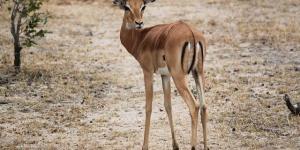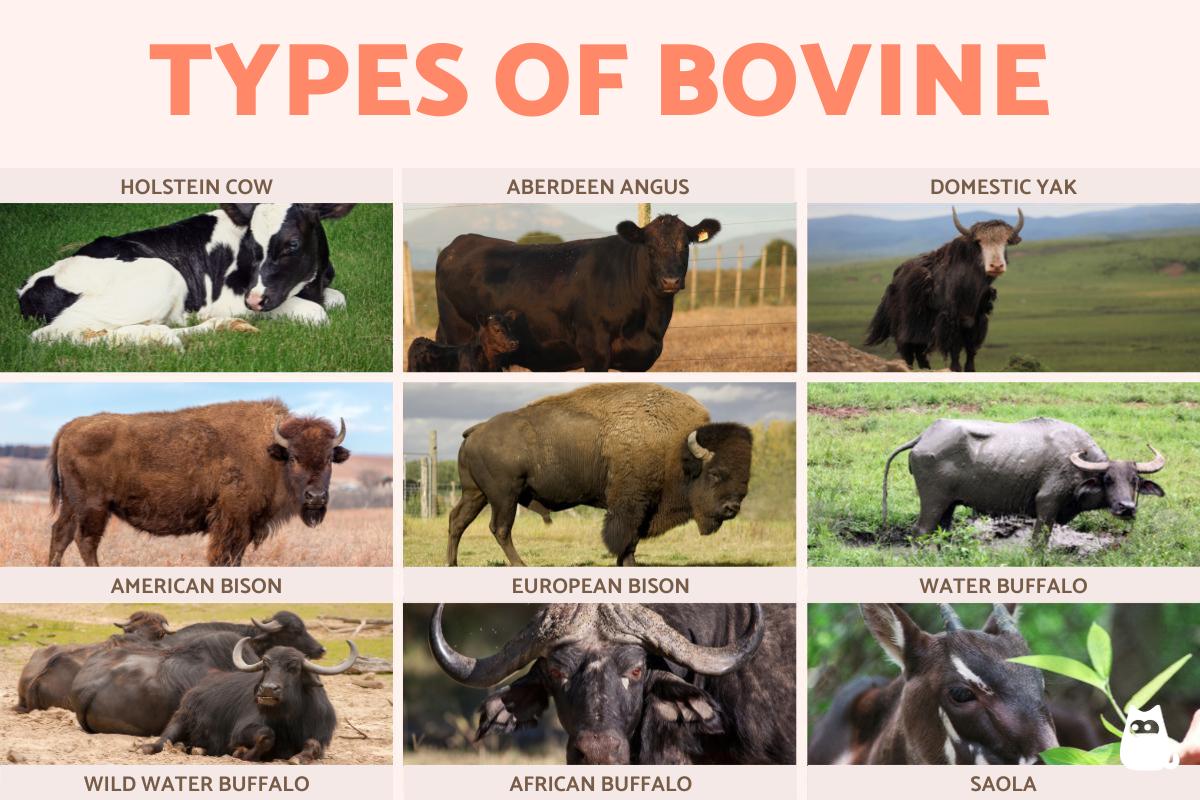List of Bovine Animals

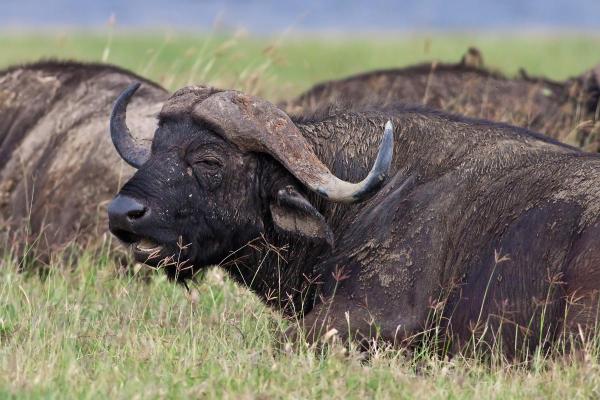
Bovines are animals of the subfamily Bovinae, under the larger taxonomic family Bovidae. Their categorization is important, especially to human civilizations. Throughout history, bovines have been integral in providing for sustenance, infrastructure, industry and many other aspects of human development. All bovines are types of ruminant animal. Perhaps the most well-known to us are cattle, commonly known as cows and bulls. Other types of bovine include buffalo, bison and yak. They have both a great distribution and diversity, resulting unique characteristics between bovine species. Both make them invaluable to domestic environments and in natural ecosystems.
At AnimalWised, we help you to learn more by providing a list of bovine animals. We discover what characteristics they share, as well as the distinctive traits which separate each species.
What are bovine animals?
Bovines are mammals belonging to the subfamily Bovinae of the larger Bovidae family. They are ungulate animals which are distinguished by being large herbivorous animals with a digestive system specialized in processing fibrous vegetation through fermentation. This subfamily includes both domesticated species, such as cows, bulls and buffalos, as well as wild species such as bison and yaks.
As they are ungulate animals, bovines walk on hooves rather than paws like some other mammals. This allows them to traverse rocky and often inhospitable terrain. This is useful in grazing in areas with low vegetation, making them well adapted to various environments. The horns of bovines usually occur on both males and females. While they can differ according to bovine species, these horns are unbranched, grow throughout their lives and tend to be curved.
Bovines are also characterized by being types of ruminant animals, meaning they have a unique digestive system. This compartmentalized digestive system allows them to break down and use plant nutrients that other animals cannot digest. Rather than separated stomachs, they have a mult-chambered stomach which allows them to ferment their food microbially to digest cellulose.
In comparison to other bovids, bovines tend to be larger and have a more complicated social structure. Their herd behaviors can change according to species, with various social hierarchies existing. They tend to be gregarious and social, whereas some other bovid species can be more solitary. They are also known for having common domesticated species, especially cattle.
The domestication of cattle dates back more than 10,000 years, with origins in regions of Asia and the Middle East. During this time, they have played an essential role in human sustenance. This is not only as a source of meat and milk, but also as pack animals and producers of manure to fertilize crops. In addition, their presence in different cultures has led to them becoming associated with various religious symbols, traditions and myths.
Characteristics of bovine animals
Cattle share a number of characteristics that make them particularly well adapted to their roles in their ecosystem and agriculture. These characteristics encompass physical, biological and behavioral aspects. They include:
Body morphology
Bovines have robust and muscular bodies that allow them to withstand adverse physical conditions. They have strong legs and hooves adapted to walk on varied terrain, from plains to hills. Their skin is thick, giving them some resistance to insects and climatic changes. They are generally the largest types of bovid.
A common feature in many species and breeds of bovine is the presence of horns. These are used for defense, determining social hierarchies and, in some cases, mating. Some domestic breeds have been genetically selected not to develop horns (polled), making them easier to manage on farms.
Specialized digestive system
The bovine digestive system includes a stomach which is divided into four compartments:
- Rumen: acts as a large reservoir where microorganisms break down cellulose.
- Reticulum: helps form the food bolus that will be regurgitated and chewed again.
- Omasum: filters and absorbs water and nutrients.
- Abomasum: functions like most other stomachs where digestive enzymes act on food.
This adaptation allows them to take advantage of plant resources of low nutritional quality such as grasses and fodder. Much of their diet is made of plant material which is high in cellulose, a material which is difficult to break down. Allowing for fermentation and regurgitation can help to break this down into a more digestible state. Learn more with our article asking how many stomachs does a cow have?
Life cycle and reproduction
Cattle typically have a life expectancy of 15 to 20 years under ideal conditions. However, this will differ according to species. In terms of reproduction, bovines share the following characteristics:
- Sexual dimorphism: although both sexes tend to have horns, there is usually some form of sexual dimorphism in bovines. Males tend to be larger and are generally more robust.
- Gestation: gestation periods of bovines are relatively long, with cows having a similar duration to humans.
- Maternal bonding: strong maternal instincts are observed during the early years of life. Mothers can become very protective and defensive over their young.
Social behavior
Cattle are social animals that live in groups with defined hierarchies. These hierarchies affect their access to resources such as food and water. In the wild, they form herds that offer them protection from predators. Other bovines also tend to exhibit social and gregarious behaviors.
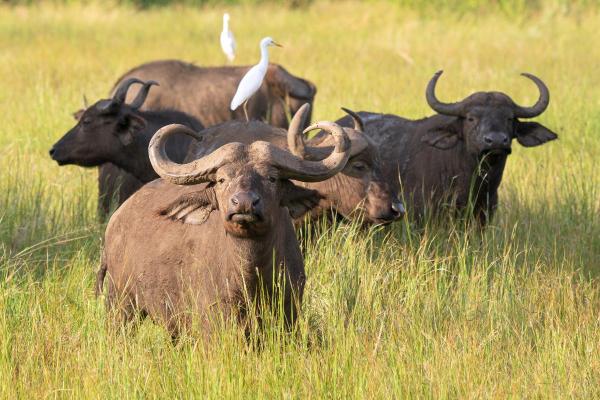
Classification of cattle
Bovines are classified taxonomically as follows:
- Kingdom: Animalia
- Phylum: Chordata
- Class: Mammalia
- Order: Artiodactyla (mammals with paired limbs and hooves)
- Family: Bovidae (ruminant mammals with permanent horns covered with keratin)
Within this family, the subfamily Bovinae includes several genera, such as:
- Bos: domestic cattle, yaks, and related wild species.
- Bison: American and European bison.
- Boselaphus: nilgai.
- Bubalus: water buffalo, mountain anoaand others.
In addition, different species, subspecies, and breeds are recognized based on physical, geographic or genetic characteristics. Bovines can be classified into several categories based on their domestication, origin and purpose:
Domestic bovines
This group includes species and breeds raised by humans for agricultural, commercial or cultural purposes. Domesticated bovines encompass a wide range of animals, such as cattle (Bos taurus and Bos indicus), water buffalo (Bubalus bubalis) and domestic yaks (Bos grunniens). These animals are commonly divided into:
- Dairy bovines: selected for milk production.
- Beef bovines: bred primarily for meat production.
- Dual-purpose bovines: raised for both milk and meat.
Wild bovines
This group includes non-domesticated species that inhabit wild or semi-wild environments, such as:
- American bison (Bison bison): roams the grasslands of North America.
- European bison (Bison bonasus): native to European forests.
- African buffalo (Syncerus caffer): a powerful bovine adapted to the savannas and woodlands of Africa.
- Wild yak (Bos mutus): thrives in the high-altitude regions of the Himalayas.
Wild bovines exhibit unique adaptations for surviving in diverse climates and ecosystems.
Hybrid bovines
Hybrids are created by crossing different species or breeds to combine desirable traits. Examples include:
- Beefalo: a cross between domestic cattle (Bos taurus) and American bison (Bison bison), bred to combine the hardiness and strength of the bison with the docility and productivity of cattle.
- Dzo: a hybrid between domestic yaks (Bos grunniens) and domestic cattle (Bos taurus), valued for its strength and utility in high-altitude farming.
This classification underscores the diversity of bovines and their significant roles in ecosystems, agriculture and human culture. While not all are types of bovine, you can discover the different types of horned animals with our related guide.
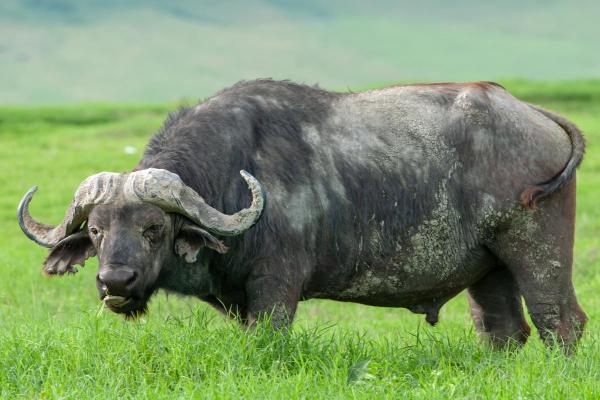
Examples of bovine animals
Below we show you some examples of the most well-known types of bovines according to their different genera:
Bos
Within this genus, we find the following examples of cattle breeds:
- Holstein cow: originating in the Netherlands and known for being dairy cattle. It is the most productive dairy cow breed in the world, capable of producing up to 10,000 liters of milk per lactation. Its distinctive black and white markings are easily recognizable.
- Aberdeen Angus: originates from Scotland. It is famous for its high-quality meat. They are robust and hornless animals which are black or red in color.
- Domestic yak (Bos grunniens): not a breed, but a different species of cattle originating from the Himalayas. This species is characterized by its thick fur and ability to live at extreme altitudes. It is an indispensable animal for the communities of Tibet. Discover other native animals of the Himalayas in our related guide.
Bison
Within this genus, we find the following examples of bovines:
- American bison (Bison bison): native to North America. It was historically hunted by indigenous peoples for its meat, skin and for making tools. It has a massive body, with a hump on the shoulders and exceptional resistance to extreme climates.
- European bison ( Bison bonasus ): less robust than its American relative, it lives in forests in Europe. Read our article to learn the difference between buffalo, water buffalo and bison.
Bubalus
Within this genus, we find the following examples of bovines.
- Water buffalo (Bubalus bubalis): originates from Asia. Historically, it was used for agricultural work, milk and meat production. It is an animal that is adapted to tropical climates, with long, curved horns that differentiate it from other bovine species.
- Wild water buffalo (Bubalus arnee): this is a large wild bovine that lives in South Asia and is currently considered Endangered. Learn about the threats to this bovine species with our article explaining why the wild water buffalo is endangered.
Syncerus
Within this genus, we find the following examples of bovines.
- African buffalo (Syncerus caffer): like the savannah buffalo, a large and aggressive species found in sub-Saharan Africa.The forest buffalo is a smaller species that lives in tropical forests. Both are very important for African ecosystems and one of the most dangerous species on the continent.
Pseudoryx
Within this genus, we find the following examples of bovines.
- Saola (Pseudoryx nghetinhensis): also known as the spindlehorn or the Asian unicorn, it is the only member of its genus. One of the most endangered and difficult to observe bovine species, it is native to the mountain forests of Laos and Vietnam.
Learn more about individual cattle animals with our article explaining what is the difference between an ox and a bull?
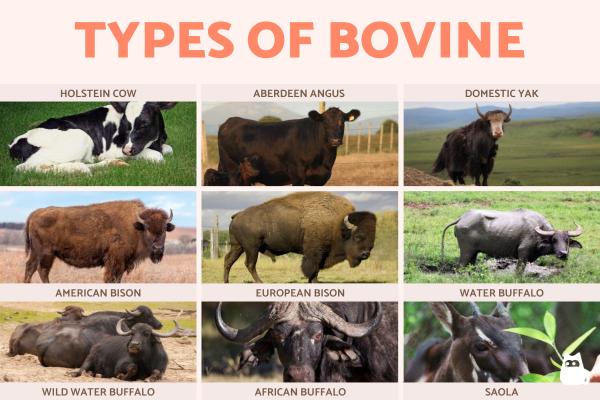
If you want to read similar articles to List of Bovine Animals, we recommend you visit our Facts about the animal kingdom category.
- Chen, X., Guan, T., Jiang, W., Li, D., Yang, K., & Li, S. (2021). Distribution and population status of bovine species in China based on bibliometric analysis. Biodiversity Science, 29(5), 668–679. https://doi.org/10.17520/biods.2020393
- Pitt, D., Sevane, N., Nicolazzi, E. L., MacHugh, D. E., Park, S. D., Colli, L., ... & Orozco‐terWengel, P. (2019). Domestication of cattle: Two or three events? Evolutionary Applications, 12(1), 123–136. https://doi.org/10.1111/eva.12674
- Zhang, K., Lenstra, J. A., Zhang, S., Liu, W., & Liu, J. (2020). Evolution and domestication of the Bovini species. Animal Genetics, 51(5), 637–657. https://doi.org/10.1111/age.12954




